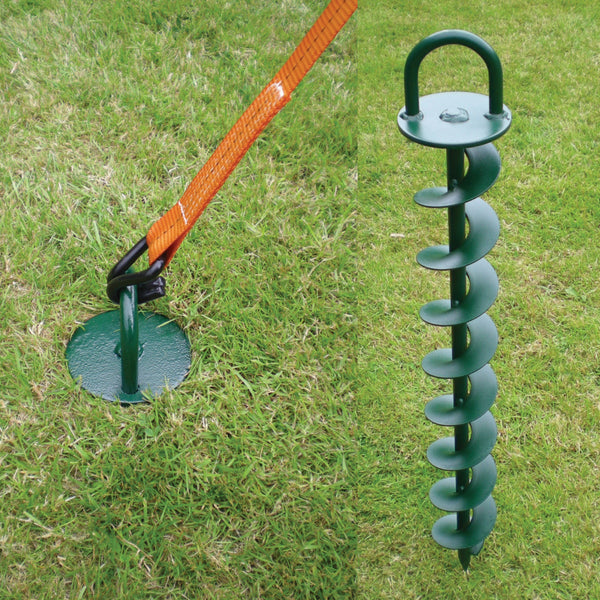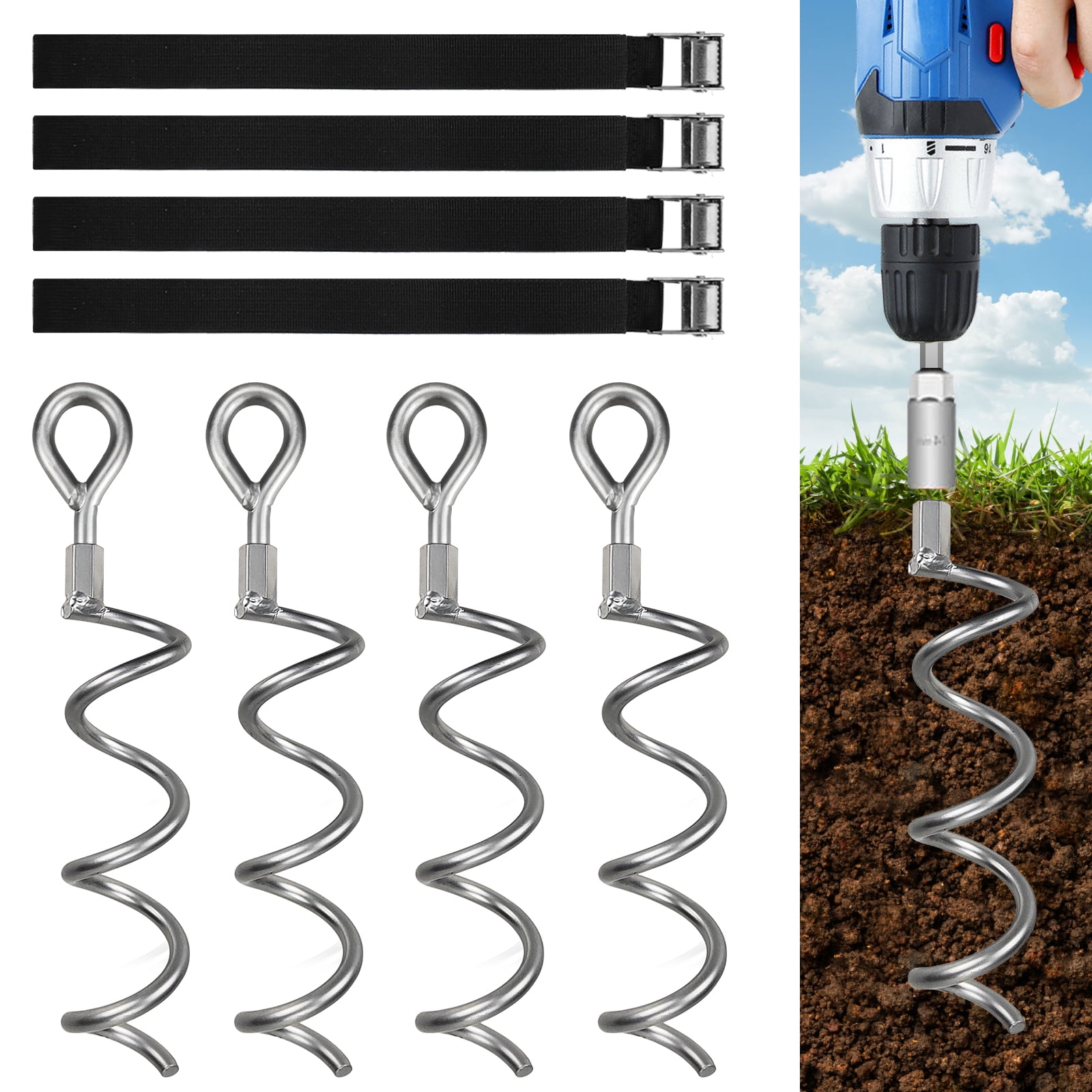Expert-Recommended Techniques to Install a Ground Anchor for Better Stability
Expert-Recommended Techniques to Install a Ground Anchor for Better Stability
Blog Article
Discover the Benefits of Utilizing Ground Support for Enhanced Security
Ground anchors are important to boosting stability across various applications, particularly in building and construction and exterior events. Their capacity to offer assistance versus side forces makes them very useful in challenging dirt conditions, using a trustworthy service throughout severe weather situations. In addition, ground anchors are made to decrease environmental influence and installation expenses, while accommodating specific job requirements. As we discover the multifaceted advantages of ground supports, an important inquiry develops: what aspects should be considered when choosing the most suitable type for your project?
What Are Ground Supports?
Utilizing cutting-edge engineering remedies, ground anchors are specialized tools developed to secure structures to the ground, giving stability and support in different applications. These supports are usually ingrained deep right into the soil and are used in an array of building and civil design projects, including structures, preserving walls, and bridges. By transferring the load of a structure into the bordering planet, ground supports effectively combat pressures such as stress, shear, and side tons.
Ground supports can be found in different forms, consisting of passive and energetic systems - Ground Anchor. Passive supports rely upon rubbing and the weight of the structure for stability, while active supports make use of stress to enhance their grasp within the soil. Common materials for ground anchors consist of steel, which supplies high tensile toughness, and artificial materials, which can offer corrosion resistance in certain settings
The installment of ground supports is a vital action in making certain the long-term resilience of structures. Appropriate layout and execution are important to accommodate aspects such as soil make-up, environmental problems, and lots requirements. As an outcome, ground supports play a vital role in preserving the honesty and safety of engineering tasks across diverse setups.
Trick Benefits of Ground Supports
Ground anchors provide numerous key benefits that improve the stability and long life of frameworks in numerous design applications. Among the primary benefits is their ability to supply added support and resistance against lateral pressures, such as wind and seismic task. This increased stability is important for keeping the integrity of structures, specifically in tough environments.
Moreover, ground supports are flexible and can be made use of in a selection of soil conditions and terrain kinds. Their adaptability enables engineers to carry out securing solutions customized to particular task needs, making sure optimum efficiency. The setup of ground anchors is normally less intrusive and calls for minimal excavation, minimizing the ecological impact and building and construction time.
Furthermore, ground anchors contribute to cost-effectiveness by minimizing the requirement for considerable foundation work. By dispersing loads more uniformly, they can reduce the total product needs and costs connected with conventional foundation approaches. Finally, the long-term performance of ground supports can result in reduced maintenance requirements, additionally boosting their economic stability. Jointly, these advantages position ground anchors as a reliable option for enhancing architectural stability in design tasks.
Applications in Construction
The adaptability of ground supports makes them invaluable in various building and construction applications - Ground Anchor. These anchors give essential stabilization for frameworks, specifically in tough soil problems or on sloped terrains. read this They are generally used in keeping wall surfaces, making sure that these frameworks can withstand lateral planet pressures while avoiding soil disintegration
In structure job, ground supports are critical for safeguarding momentary structures, such as shoring systems, throughout excavation procedures. By giving added support, they help preserve the integrity of nearby structures and prevent ground motion. Moreover, ground supports are utilized in the construction of towers and bridges, where they can soak up tensile loads and boost the total security of the framework.
Additionally, ground supports are integral in the installation of wind turbines, where they assist secure the generator base versus high winds and various other ecological stress and anxieties. Their adaptability allows for various designs, including helical, driven, and grouted anchors, tailored to specific site conditions. Overall, the application of ground anchors in construction not only boosts safety but also adds to the longevity of frameworks, making them a basic part in modern-day engineering practices.
Enhancing Outdoor Occasion Stability
Ensuring security at outside events is vital for both safety and security and functional effectiveness. Ground anchors give a dependable solution to safeguard short-lived directory frameworks, such as camping tents, stages, and tools, versus negative climate condition and unanticipated disturbances. By making use of ground anchors, event organizers can significantly minimize the threat of structural failing, which can lead to injuries and accidents.
The application of ground supports plays a pivotal function in keeping the integrity of the event design. They can properly maintain outdoors tents and canopies, ensuring that they remain strongly in area during gusty problems. This not just secures guests yet likewise protects the tools and materials within the occasion area.
Furthermore, ground anchors enhance the total visual of outside events. By eliminating the need for added assistances or large weights, they create a cleaner, extra well organized look. This is especially essential for high-profile events where aesthetic discussion matters.
Choosing the Right Ground Support
Choosing the appropriate ground support is important for attaining ideal stability and safety and security at outdoor occasions. Different factors need to be taken into consideration when making this option, consisting of soil kind, environmental problems, and the particular needs of the structure being secured.
To start with, examine the soil problems where the anchor will certainly be mounted. Sandy or loosened soil might need a different support type compared to clay or rocky surface. As an example, auger anchors are reliable in loose soils, while deadman supports supply better security in stronger ground.


Following, review the ecological problems, such as wind tons, prospective rains, and the total weather report - Ground Anchor. Higher wind rates demand even more durable anchoring remedies to stop motion or tipping of frameworks
Furthermore, think about the weight and height of the frameworks entailed. Bigger canopies or tents will certainly require heavier-duty anchors compared to smaller arrangements.
Verdict
To conclude, ground supports act as a vital solution for boosting stability across numerous applications. Their capability to supply extra support versus side pressures in tough dirt conditions ensures the safety and security and stability of frameworks. The convenience of ground anchors enables efficient use in both irreversible and short-lived setups, significantly decreasing environmental influence and installation costs. Eventually, the fostering of ground supports represents a prudent selection for achieving optimum security in building and construction and exterior settings.

Report this page